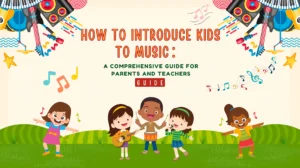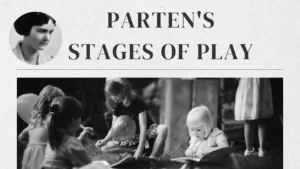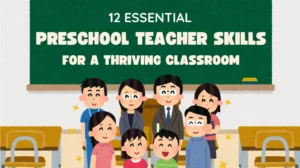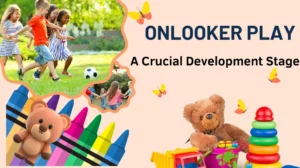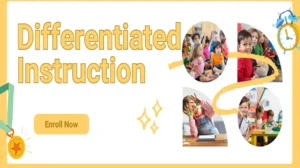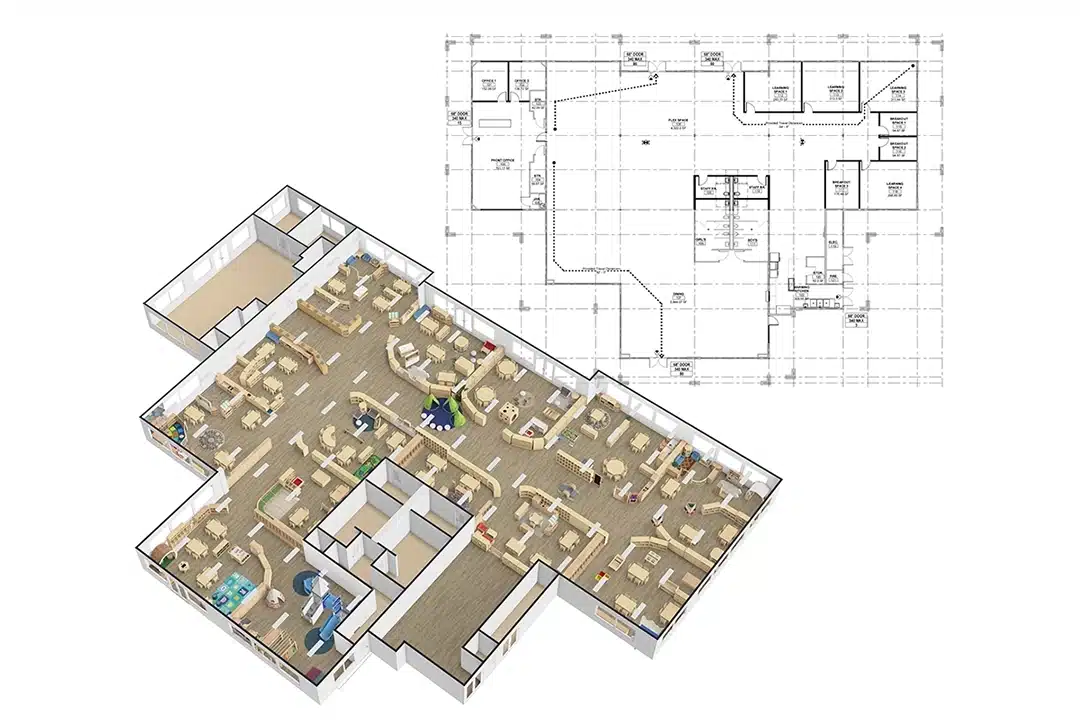Effective communication is the cornerstone of successful human interactions. One crucial aspect of communication often overlooked is receptive language—the ability to understand and process spoken or written messages. While much attention is given to expressive language (how we convey our thoughts), receptive language is equally vital in ensuring meaningful conversations and social engagement.
Receptive language is the skill that allows individuals to comprehend spoken and written language. It is a key communication component, enabling listeners or readers to understand the information they receive. It differs from expressive language, which focuses on how individuals communicate their thoughts. Strong receptive language skills help us follow directions, understand stories, grasp concepts in education, and engage in meaningful conversations. Therefore, mastering receptive language is vital to effective communication in personal and professional settings.
This guide will delve deep into receptive language, examining its importance, development stages, challenges, and strategies to enhance these skills across different life stages.
What is Receptive Language?
Receptive language refers to the ability to understand and comprehend language. This includes understanding spoken words, sentences, written text, gestures, tone, and non-verbal cues. It’s a skill that often goes unnoticed because it works silently in the background. When someone says, “Pass the salt,” the listener’s ability to comprehend that command and respond accordingly showcases receptive language.
This form of language involves various cognitive processes, including auditory processing, memory, attention, and context interpretation. It is also foundational to learning—students who struggle with receptive language may find it challenging to follow directions or grasp new concepts in the classroom.

How Receptive Language Develops in Children?
Receptive language starts developing at birth. Babies listen to voices and begin processing the rhythm and tone of speech. By 6 months, they start to recognize familiar sounds like their name or common objects. By 1 year, most babies understand simple commands like “come here” or “no.”
As toddlers grow, receptive language becomes more sophisticated. They understand more words, concepts like “under” or “beside,” and respond to questions. Preschoolers typically comprehend thousands of words even if they can’t say them all.
This language growth is deeply tied to a child’s brain development and the language-rich environment around them. Repetition, clear articulation, and exposure to both spoken and written language support this process.
Receptive language is strengthened through:
- Routine language exposure.
- Repetition of new vocabulary in context.
- Interactive storytelling.
- Songs and games that emphasize listening.
Why is Receptive Language Important?
Receptive language is essential because it enables us to make sense of the world around us. Without strong receptive language skills, understanding spoken words, following instructions, and engaging in meaningful conversations would be challenging. It is the gateway to learning, socializing, and participating in society.
In children, receptive language development is linked to academic success. Understanding directions, grasping new concepts, and following instructions directly influences a child’s ability to perform well in school. For adults, receptive language skills are equally important, especially in the workplace, where comprehending complex tasks, instructions, and professional communication is necessary for career success.
Moreover, receptive language affects how we navigate social interactions. People who can easily interpret language—whether in person or through digital communication—are more likely to engage in effective dialogue and foster better relationships with others.
The main benefits of receptive language include:
- Improved academic performance and classroom engagement
- Better behavior through understanding expectations
- Stronger social skills and peer relationships
- Increased confidence in communication
- Enhanced ability to learn new information
- Better problem-solving and decision-making skills
- Smoother transitions between developmental stages
- Stronger foundation for expressive language
- Greater independence in daily routines
- Improved family and community interaction
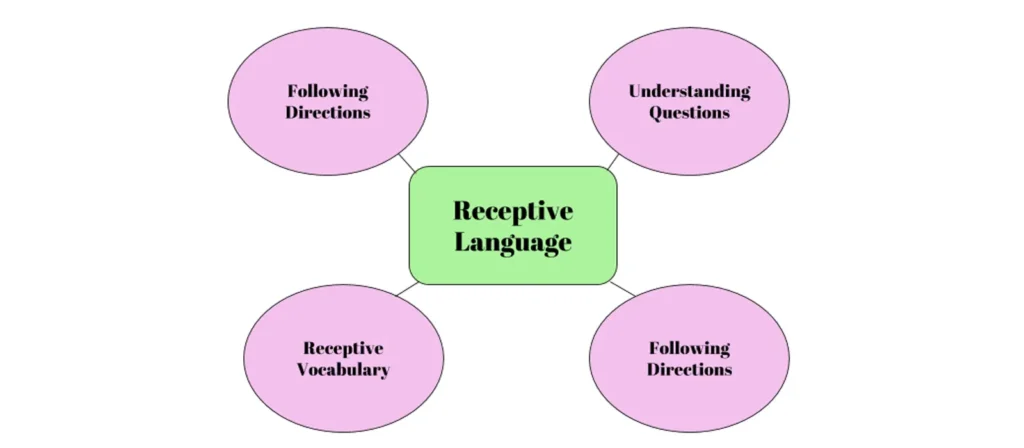
What Are the Basic Elements Needed to Develop Receptive Language?
To fully develop receptive language, several core elements need to be nurtured. These elements allow individuals to interpret and understand spoken or written communication effectively. The key components include:
1. Following Directions:
Understanding and following instructions is a fundamental aspect of receptive language. This skill develops at a young age when children respond to simple commands like “sit down” or “come here.” As they grow, their ability to follow multi-step directions improves, which enhances their overall language comprehension.
2. Understanding Questions:
Comprehending open-ended or closed questions allows individuals to respond appropriately in conversations. This skill develops in early childhood as children process questions like “What’s your name?” or “Where is your toy?” Gradually, they can understand more complex questions that require more thought and detail.
3. Understanding Grammar:
A deep understanding of grammar is crucial for receptive language. Comprehending sentence structure, tense, and word relationships allows individuals to make sense of more complex speech. Grammar comprehension starts with understanding fundamental word orders in sentences and evolves to understanding more nuanced linguistic rules as children grow.
4. Receptive Vocabulary:
Vocabulary is the cornerstone of receptive language. A broad vocabulary enables individuals to understand and interpret a wider range of language. As children are exposed to new words, they learn their meanings and how to recognize them in different contexts—expanding receptive vocabulary aids in understanding conversations and instructions more clearly.

How to Improve Receptive Language?
Improving receptive language involves consistent practice and strategies that help strengthen the ability to understand language. Here are a few key tips:
- Engage in Active Listening:
Encourage individuals to listen attentively during conversations, focusing on the speaker’s words and context. Practice comprehension exercises that require individuals to repeat what they’ve heard or to answer questions based on what they’ve listened to. - Use Visual Aids:
Visual aids such as pictures, videos, or written words can help reinforce the meanings of words and phrases, making it easier for individuals to connect language with context. - Provide Opportunities for Interaction:
Encourage active participation in conversations. This can be as simple as prompting questions during a story or having individuals follow multi-step instructions in daily activities. - Storytelling and Reading Aloud:
Reading stories aloud can be an excellent way to build receptive language skills. Asking questions about the plot, characters, and setting can help reinforce understanding while expanding vocabulary. - Repetition and Consistency:
Repeating instructions, directions, and phrases helps solidify understanding. Consistent exposure to language in various forms—spoken, written, and visual—can reinforce comprehension. - Eye Contact:
Start by encouraging eye contact. It’s not just a social skill—it’s a sign that your child is ready to listen. Gently guide their face toward yours when speaking, ensuring minimal distractions. - Minimal Instructions:
Children with receptive language difficulties often feel overwhelmed by lengthy commands. Reduce the number of instructions to one or two steps. For instance, instead of saying, “Clean your room and put your shoes in the closet,” try, “Put your shoes away.” - Verbal Instructions:
Speak clearly and at a moderate pace. Slow down and add slight vocal stress to emphasize important words. Avoid using overly complex vocabulary unless it’s necessary for the context. - Get Your Child’s Attention:
Before giving instructions, say their name and ensure they are focused. You might lightly touch their arm or pause until you have their full attention before speaking. - Show:
Demonstrate what you mean. If you’re asking your child to “hang up your coat,” act on them. Visual demonstration reduces confusion and improves comprehension. - Emphasize Key Words:
When speaking, stress the most important words. Say, “Take your shoes to the closet.” This directs the child’s focus to the action and target object. - Play:
Play-based learning is highly effective. Games that involve following directions or storytelling allow children to practice understanding language in an enjoyable, low-pressure way. - Reduce Background Noise:
Televisions, music, and household noise can interfere with language processing. Create a quiet environment during important interactions, especially when giving instructions or reading. - Read Books:
Daily reading builds receptive vocabulary and attention span. Choose interactive books and ask your child questions like “What do you think will happen next?” to engage their comprehension. - Speak Clearly:
Avoid mumbling or speaking too fast. Use a calm, even tone that’s consistent. If you switch between languages or dialects, stay consistent within the instruction to avoid confusion. - Allow Pauses and Wait for Your Child to Initiate or Respond:
Give time. Many children need extra moments to process language before responding. Don’t rush them—pause and wait patiently after asking a question or giving a direction.
Assessing and Evaluating Receptive Language
Accurate assessment of receptive language is essential for identifying strengths, weaknesses, and the need for intervention. This process involves formal evaluations and informal observations.
Formal Assessment Tools
Speech-language pathologists (SLPs) use standardized assessments to evaluate receptive language abilities across age groups. Common tools include:
- Peabody Picture Vocabulary Test (PPVT): Measures the understanding of single-word vocabulary.
- Clinical Evaluation of Language Fundamentals (CELF): Assesses a wide range of language skills, including understanding sentences and following instructions.
- Preschool Language Scale (PLS): Targets younger children, evaluating auditory comprehension and expressive communication.
- Receptive One-Word Picture Vocabulary Test: Assesses receptive vocabulary through picture identification.
These tools offer norm-referenced scores that help compare an individual’s skills to age-matched peers.
Informal Assessment Strategies
In addition to formal tools, informal evaluations help capture everyday language functioning. These may include:
- Observing classroom behavior: Noting how well the child follows instructions and participates in discussions.
- Interactive play: Using toys and activities to assess comprehension in a low-pressure setting.
- Parent and teacher interviews: Gathering information on language use and difficulties in familiar environments.
- Task-based assessments: Giving instructions during play or activities and noting the response accuracy.
A holistic approach combining formal and informal assessments ensures accurate diagnosis and appropriate intervention planning.
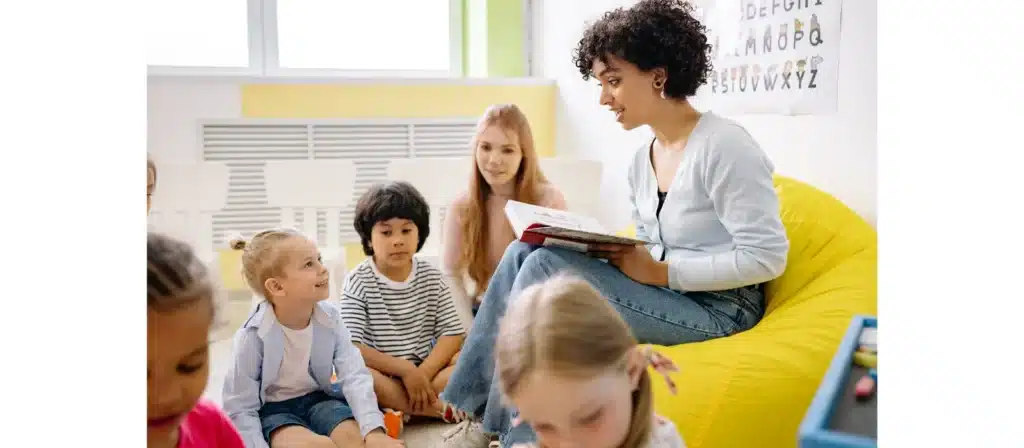
How Can We Develop Children’s Listening Skills?
Listening is a cornerstone of receptive language. To enhance it:
- Minimize distractions during conversations. Turn off the TV and put away phones.
- Play listening games such as “Simon Says,” “Red Light, Green Light,” or sound discrimination activities.
- Use books with rhyme and rhythm to improve auditory memory.
- Ask open-ended questions to encourage thoughtful listening and responses.
- Praise good listening: “I liked how you looked at me and followed all the steps!”
How Does Receptive Language Improve Relationships?
Strong receptive language builds more than academic skills—it strengthens human connection.
- Understanding emotions: Comprehending tone and words allows children to recognize how others feel.
- Resolving conflicts: Following verbal problem-solving cues helps prevent escalation.
- Engaging in conversation: Listening attentively and responding appropriately fosters friendships.
- Collaborating in groups: Interpreting instructions and social rules is essential in team settings.
In relationships, the ability to understand others is just as important as being understood. Receptive language makes empathy, cooperation, and intimacy possible.

What Is Receptive Language Delay?
A receptive language delay occurs when a child has difficulty understanding and processing spoken language at the expected age level. Unlike an expressive language delay—where a child struggles to communicate their thoughts—a receptive delay affects the intake and interpretation of information.
Signs of Receptive Language Disorder
A receptive language disorder may be suspected if an individual struggles to understand spoken or written language compared to peers. Here are some signs to watch for:
- Failure to respond to simple requests: If a child or adult does not follow basic instructions like “sit down” or “put your shoes on,” this may indicate a problem with receptive language.
- Difficulty processing multi-step instructions: Individuals with receptive language disorders may struggle to follow instructions that involve more than one step, such as “Please go to the kitchen, get a plate, and put your lunch on it.”
- Trouble with abstract language: People with receptive language difficulties often have trouble understanding figurative speech, idioms, or jokes. For example, understanding phrases like “break a leg” or “piece of cake” can be challenging.
- Limited response to questions: When asked simple questions, individuals might provide delayed or irrelevant responses, showing difficulty processing what is being asked.
- Difficulty understanding academic content: In children, struggles with understanding the materials being taught in school—whether through books, lectures, or even casual conversations with peers—can be a red flag.
Causes of Receptive Language Delay
Several factors may contribute to this delay, including:
- Hearing impairments: Difficulty hearing spoken words impairs language intake.
- Neurological conditions: Autism, ADHD, and other disorders can affect language processing.
- Developmental disorders: Delays in general development may impact language skills.
- Limited language exposure: Environments with minimal communication can delay comprehension.
- Genetic predisposition: Family history may play a role.
How to Treat Receptive Language Disorder?
Treatment for receptive language disorder varies depending on the severity of the condition and the individual’s age. Speech-language therapy is the primary treatment for receptive language disorders, focusing on improving language comprehension skills. Through therapy, individuals learn strategies to improve their listening and understanding abilities.

- Speech-Language Therapy:
Working with a speech-language pathologist (SLP) is the most common treatment for receptive language disorders. SLPs use various methods to improve listening comprehension and language processing skills, including drills, games, and exercises. - Listening and Auditory Training:
Auditory training programs can help improve the brain’s spoken language processing, focusing on sound discrimination, word recognition, and listening comprehension. - Interactive Reading and Storytelling:
This allows children with receptive language delays to develop comprehension skills by focusing on story details, asking questions, and discussing plot elements. For adults, it can involve comprehension exercises with complex texts. - Technology-Assisted Learning:
Digital apps, games, and software designed to enhance listening and comprehension skills can support treatment, providing interactive and engaging ways to improve receptive language. - Family and Caregiver Training:
Families and caregivers should be trained to support language development at home for effective long-term results. This may include strategies like modeling appropriate language use, engaging in conversation, and reinforcing listening skills during everyday activities.
Receptive vs. Expressive Language
Receptive and expressive language are two important aspects of communication, and while they are closely related, they differ significantly in their function and development. To better understand these differences, let’s break them down in a comparative table:
| Aspect | Receptive Language | Expressive Language |
|---|---|---|
| Definition | Ability to understand language, including spoken and written. | Ability to produce and convey language through speech or writing. |
| Focus | Comprehension of words, phrases, and instructions. | Formulation of words, sentences, and ideas. |
| Development | Develops earlier than expressive language. | Develops later, often as a result of receptive language skills. |
| Key Skills | Following directions, understanding questions, interpreting non-verbal cues. | Speaking, writing, using correct grammar, and expressing thoughts. |
| Examples | Following the command “Put the toy in the box.” | Saying, “I want to play with the toy.” |
| Typical Age of Mastery | Can start as early as infancy. | Typically mastered in toddler years and continues to develop. |
Examples of Receptive Language Activities
Receptive language refers to the ability to understand or interpret language. It involves recognizing, processing, and responding to spoken or written words. Below are several examples of receptive language skills that individuals develop over time, starting from basic understanding to more complex comprehension:
- Following Simple Directions:
A key example of receptive language is the ability to follow basic instructions, such as “Pick up the toy” or “Please close the door.” The brain processes these simple directions, and the person understands what action is required in response. - Understanding Commands with Visual Cues:
When a child is told, “Put the toy on the shelf,” they may follow the instruction by listening to the command and observing the associated action. This interaction of language and visual cues is essential for building a strong foundation in receptive language. - Comprehending Yes/No Questions:
Receptive language includes understanding simple yes/no questions. For instance, “Do you want to go outside?” or “Is this your book?” The listener must process the question and determine an appropriate response, whether verbal “yes” or “no” or a physical reaction like nodding or shaking their head. - Responding to Complex Requests:
As children grow, their receptive language skills expand to include multi-step instructions. For example, “Please put your shoes in the closet, take your coat off, and sit at the table.” The child must understand each part of the instruction and process it sequentially. - Understanding Vocabulary in Context:
A critical aspect of receptive language is vocabulary comprehension. A child understands that the word “dog” refers to an animal, “milk” refers to a drink, and “happy” refers to a feeling. They associate these words with the objects, actions, or emotions they represent. - Identifying Objects and People:
Another example of receptive language involves identifying familiar objects and people by name. A child might recognize and point to a picture of their mother or the family dog when asked, “Where’s Mommy?” or “Can you find the dog?” - Understanding Non-verbal Cues:
Receptive language goes beyond just spoken or written words. It also includes interpreting body language, facial expressions, and tone of voice. For instance, a child may understand that when their parents’ voice sounds stern, it’s a sign of displeasure, even if no words are spoken. - Responding to Questions About Stories:
A child with good receptive language skills can answer questions about a story or event they just heard or experienced. For example, after listening to a short story, a child may be asked, “What did the dog do?” and should be able to point out or explain the key actions or events. - Simon Says:
This classic game teaches listening, following directions, and attention control. Varying verbs and concepts increase the difficulty over time. - Tactile Bag Games:
Place various objects in a bag. Ask your child to find “something soft” or “something round.” This encourages vocabulary comprehension through sensory exploration. - Face-to-Face Communication:
Sit at eye level and interact directly. This approach fosters attention, social skills, and a clearer understanding of verbal and nonverbal cues. - Exaggeration:
Use exaggerated facial expressions, gestures, and vocal tones to emphasize meaning. Emotionally engaging content is more likely to be understood and remembered by children. - Tell About Your Day:
Encourage your child to share what they did using prompts and questions. You can model this by discussing your day in clear, simple language.
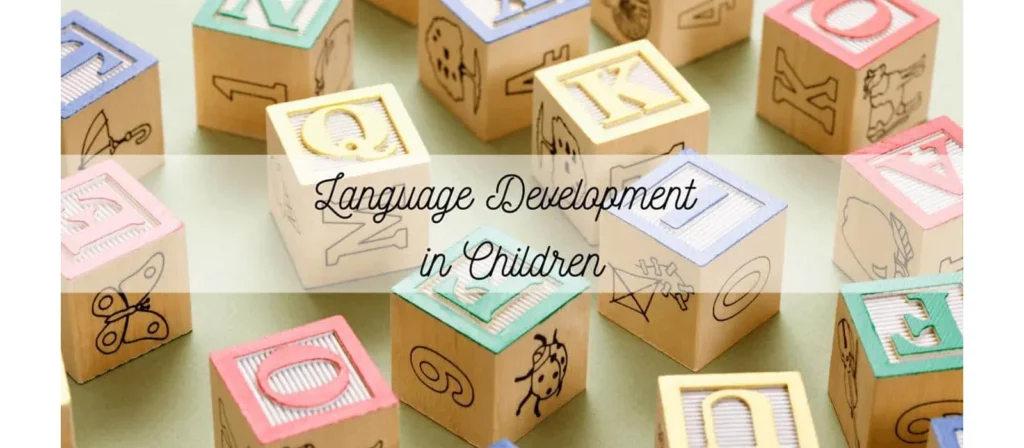
Receptive Language Milestones
Understanding how receptive language develops over time is essential for identifying typical growth, supporting learning, and spotting delays early. Receptive language does not develop in isolation—it progresses through a series of well-established milestones that are influenced by both biological maturation and environmental exposure. Here’s a comprehensive look at what to expect at each age and stage:
Birth to 3 Months
In this earliest stage, babies are already hardwired to respond to human voices. Their receptive language responses are primarily reflexive and sensory.
- Reacts to familiar voices, especially a parent’s.
- Startles or quiets in response to loud or soothing sounds.
- Looks toward sound sources like rattles or voices.
- Begins to differentiate tones, responding differently to happy, angry, or soothing speech.
- Calms when spoken to, especially in a sing-song or rhythmic tone.
Support Strategies:
- Talk, sing, and coo to your baby regularly.
- Use exaggerated intonation to capture attention.
- Maintain close, loving eye contact during interactions.
Note: Early responses are largely reflexive, but foundational for later receptive development.
3 to 6 Months
This period sees a dramatic increase in responsiveness. Infants become more aware of their auditory environment.
- Recognizes and responds to their name by turning or smiling.
- Stops crying when spoken to, suggesting recognition of comfort in the tone.
- Begins to associate words with actions, such as smiling when hearing “milk” or “mommy.”
- Watches your mouth as you speak, a sign of growing auditory-visual integration.
Support Strategies:
- Introduce simple games like peekaboo to build sound-response patterns.
- Name familiar objects during routines (“Here’s your bottle”).
- Use melodic speech and sing during daily activities.
6 to 12 Months
Receptive language begins to take a cognitive turn, with infants showing clear understanding of key words.
- Understands basic words like “no,” “bye-bye,” or “more.”
- Responds to simple commands with gestures, like “come here” or “give me.”
- Waves or claps on request, even without seeing others do it.
- Shows recognition of daily routines, like reacting to the word “bath” with excitement.
Support Strategies:
- Ask yes/no or “where” questions during play.
- Use consistent labels for objects and people.
- Reinforce understanding by pairing gestures with spoken words.
1 to 1.5 Years
Toddlers begin to comprehend and respond to an expanding set of words and phrases.
- Points to common objects when named (e.g., “Where’s your ball?”).
- Follows simple one-step directions, like “Get your shoes.”
- Shows understanding of basic categories, such as foods, animals, or body parts.
- Recognizes names of familiar people, even when they’re not present.
Support Strategies:
- Use books with clear pictures and label items together.
- Offer two options (“Do you want juice or milk?”) and wait for recognition.
- Encourage simple routines and repeat instructions consistently.
1.5 to 2 Years
This is a period of vocabulary explosion in receptive development. Children typically understand more than they can say.
- Follows two-step related commands, like “Pick up the toy and give it to me.”
- Understands action words, such as “run,” “eat,” or “sleep.”
- Begins to answer yes/no questions with appropriate gestures or single words.
- Understands opposites (e.g., up/down, hot/cold) with visual support.
Support Strategies:
- Narrate your actions using clear, simple language.
- Emphasize new vocabulary in context.
- Use pretend play to model comprehension through action.
2 to 3 Years
Language comprehension takes a big leap, often outpacing expressive abilities.
- Understands positional concepts like “in,” “on,” “under.”
- Follows longer instructions, sometimes involving three parts.
- Answers simple “wh” questions (who, what, where).
- Understands turn-taking and simple rules in games or conversations.
Support Strategies:
- Ask open-ended questions to encourage deeper thinking.
- Give directions involving locations and order.
- Encourage storytelling with picture sequences.
3 to 4 Years
At this stage, children begin to handle more abstract and inferential language.
- Understands basic sequences, like the order of daily events.
- Grasps concept words such as “same,” “different,” “big,” “small.”
- Responds appropriately to indirect language, like “Let’s get ready,” by going to the door.
- Shows awareness of cause and effect, such as understanding why a character is sad in a story.
Support Strategies:
- Read longer picture books and ask prediction questions.
- Use storytelling apps or puppet play to enhance attention.
- Play sorting games with categories and opposites.
4 to 5 Years
Comprehension becomes more complex, and children can engage with more nuanced language.
- Understands and uses time-related words like “yesterday,” “soon,” and “later.”
- Interprets feelings and motives of characters in stories.
- Understands conditional directions, like “If you pick up your toys, then we can go outside.”
- Can follow classroom instructions without visual cues.
Support Strategies:
- Encourage daily retelling of events in logical order.
- Use board games that require rule-following and interpretation.
- Expose them to new vocabulary in real-world contexts (e.g., markets, parks).
5 to 6 Years
Receptive abilities are becoming closely aligned with academic expectations.
- Follows multi-step, unrelated directions, such as “Get your coat, then draw a circle.”
- Comprehends more sophisticated vocabulary from books and spoken explanations.
- Listens attentively to stories and can answer open-ended questions about plot or characters.
- Begins to grasp more nuanced language such as sarcasm or humor in context.
Support Strategies:
- Discuss books in depth and talk about character motivations.
- Practice following directions involving three or more steps.
- Encourage summarizing information heard or read.
6 to 7 Years Old
Language comprehension becomes more analytical.
- Understands comparative terms (“bigger,” “least,” “more than”).
- Follows complex instructions even when steps aren’t given in order.
- Retells stories using correct sequence and important details.
- Demonstrates problem-solving through language, such as choosing alternatives in a story.
Support Strategies:
- Introduce age-appropriate jokes and discuss meanings.
- Use project-based learning to enhance comprehension.
- Practice retelling stories from different perspectives.
7 Years and Older
At this age, receptive language integrates with reading comprehension, critical thinking, and social cognition.
- Understands idioms, metaphors, and figurative language, such as “It’s raining cats and dogs.”
- Processes layered and nuanced information, like understanding sarcasm or indirect criticism.
- Analyzes spoken arguments, recognizing main ideas and supporting details.
- Manages group conversations, interpreting multiple speakers, tones, and perspectives.
Support Strategies:
- Use novels and news articles for reading discussions.
- Practice inferencing through “what do you think will happen next” prompts.
- Encourage note-taking or summarizing complex topics.

How to Develop Receptive Language Skills at Home?
Supporting receptive language at home doesn’t require specialized training—it requires intention, consistency, and meaningful interaction. Whether your child is developing typically or showing signs of a language delay, these strategies foster understanding and create a nurturing communication environment.
1. Daily Activities
Receptive language can be cultivated through everyday routines. Each moment of the day holds an opportunity to reinforce understanding through natural conversation.
- Morning routines: Narrate actions as you go—“Now we’re brushing our teeth. Next, we put on socks.”
- Mealtime talk: Ask open-ended questions like “What did you do today?” or “What comes after lunch?”
- Grocery shopping: Encourage your child to find items—“Can you find the red apples?” or “Put this box in the cart.”
- Bath time: Provide clear, step-by-step instructions, such as “First, wash your hair. Then rinse with water.”
These simple moments are powerful. The consistency of language paired with real-life actions reinforces vocabulary and comprehension.
2. Effective Communication Strategies
Clarity is key. Children learn better when communication is straightforward, age-appropriate, and supported by visuals or gestures.
- Speak slowly and clearly: Use simple language that matches your child’s comprehension level.
- Use gestures and expressions: Point, nod, or mimic actions while speaking.
- Ask, then wait: Give your child enough time to process and respond. Silence is not a lack of understanding—it’s often part of processing.
- Repeat and rephrase: Restate instructions or questions differently to strengthen meaning.
Consistency in these approaches builds listening habits and enhances understanding over time.
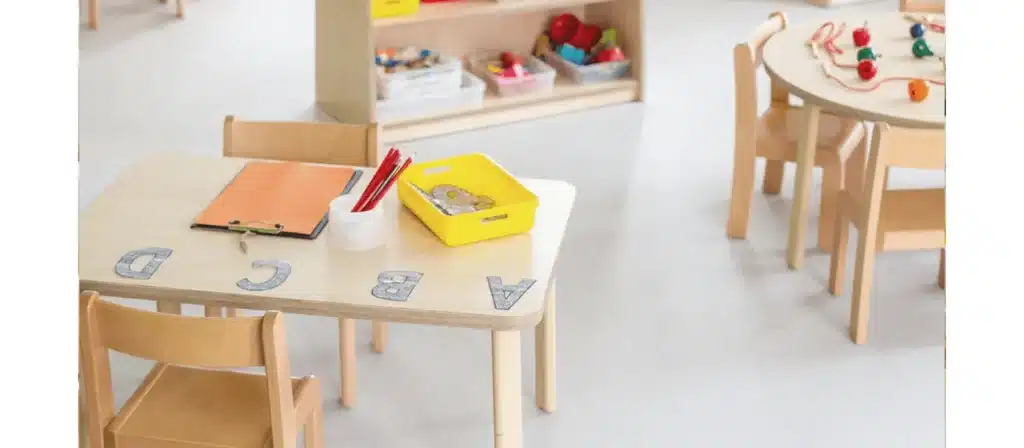
3. Create a Language-Rich Environment
Immersing your child in a world full of words enhances language processing. This doesn’t mean nonstop chatter—it means purposeful, meaningful exposure.
- Label objects around the home with words and images.
- Play music with clear lyrics and sing along together.
- Engage in conversations about everyday events, asking for your child’s thoughts or observations.
- Expose your child to varied vocabulary through storytelling, field trips, or interactive discussions.
The richer the linguistic environment, the stronger the brain’s ability to process and comprehend language.
4. Participate in Language Development Activities
Interactive activities are among the best tools for building receptive language. Choose ones that require listening, responding, and thinking.
- Story sequencing: Read a short story and ask your child to organize events.
- “I Spy”: Build vocabulary while helping your child listen for clues.
- Matching games: Reinforce associations between objects and words.
- Role-play: Act out familiar situations like a doctor visit or restaurant order using real or pretend props.
These activities engage the brain in active listening and help bridge understanding with experience.
5. Model Active Listening
Children learn to listen by watching how we listen. Modeling active listening teaches respect, focus, and comprehension.
- Make eye contact and lean in when your child is talking.
- Pause to let them finish before responding.
- Reflect or summarize what they said: “So you’re saying you felt left out at recess?”
- Avoid interrupting and show genuine interest in their words.
When children feel heard, they become more engaged listeners themselves.
6. Incorporate Play-Based Learning
Play is a natural and effective way for children to develop receptive language without pressure. Through play, they explore new words, follow directions, and engage with others.
- Pretend play: Use scenarios like “playing house” or “going shopping” to practice listening and responding.
- Board games: Follow instructions, wait for turns, and listen to the rules.
- Puppets or dolls: Create dialogues and interactive scenes that build comprehension.
Play makes learning language feel like fun—not work.
7. Meet Individual Needs
Each child has unique strengths and challenges. Tailor your approach to match their developmental stage and learning preferences.
- Visual learners can use charts, symbols, or videos.
- For children with sensory sensitivities, minimize background noise and distractions.
- For those with delays, simplify language further and seek professional guidance.
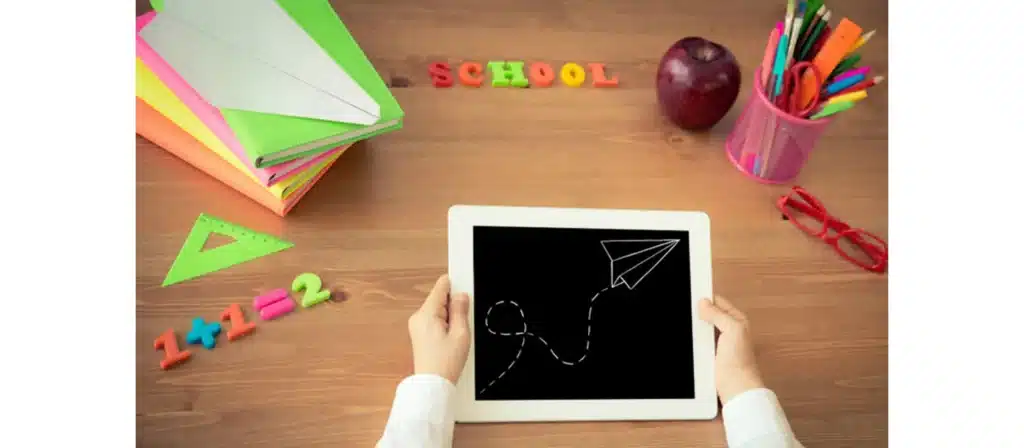
Apps and Resources for Receptive Language Practice
Here’s a curated list of effective tools:
- Speech Blubs – Fun, interactive video modeling for speech and listening.
- Endless Alphabet – Vocabulary-building with animated definitions.
- Proloquo2Go – AAC app supporting comprehension and expression.
- Toca Boca Series – Role-playing games that model real-world interactions.
- Fun With Directions – Targets following multi-step instructions.
- Splingo’s Language Universe – Offers listening tasks and progressive difficulty levels.
- HearBuilder Following Directions – Research-based listening and processing tool.
- Boom Cards – Customizable digital task cards for receptive skills.
- Reading Eggs – Strengthens vocabulary and reading comprehension.
- Little Stories Pro – Short interactive stories with comprehension questions.

Books to Support Receptive Language Skills
Books are one of the most powerful tools for developing receptive language. Choose stories that are interactive, repetitive, or rich in visual and emotional cues.
Top recommendations by age:
Toddlers:
- “Dear Zoo” by Rod Campbell
- “Where’s Spot?” by Eric Hill
- “Brown Bear, Brown Bear, What Do You See?” by Bill Martin Jr.
Preschoolers:
- “The Very Hungry Caterpillar” by Eric Carle
- “We’re Going on a Bear Hunt” by Michael Rosen
- “If You Give a Mouse a Cookie” by Laura Numeroff
Early Readers:
- “Don’t Let the Pigeon Drive the Bus!” by Mo Willems
- “Frog and Toad” series by Arnold Lobel
- “Amelia Bedelia” by Peggy Parish
Read with engagement: pause to ask questions, use expressive voices, and involve your child in predicting outcomes. Books don’t just build vocabulary—they nurture comprehension, listening, and joy in language.
FAQs
- Is receptive language a part of intelligence?
Not directly. While related to cognitive processing, it’s one facet of communication ability. - Can a child understand but not speak?
Yes. Many children have stronger receptive than expressive skills early on. - What age should receptive language develop?
It begins in infancy and rapidly grows through age five. - Can receptive language skills improve with age?
Yes, receptive language can improve throughout life with appropriate interventions and consistent practice. - Are receptive language and listening skills the same?
Not exactly. Listening is a component of receptive language, which also includes processing, memory, and interpretation. - Do all people with autism have receptive language issues?
Not all, but many do experience challenges interpreting language and social cues. - Can bilingualism affect receptive language development?
Yes, but often positively. Bilingual individuals may initially show slower receptive language in each language, but they often develop strong overall language and cognitive skills.
Conclusion
Receptive language skills are the foundation of effective communication, allowing individuals to understand spoken and written language and respond appropriately. From infancy through childhood, receptive language develops steadily, with each milestone building on the last. By understanding these stages, parents, teachers, and caregivers can provide the right support to foster strong receptive language skills in children, leading to better communication, stronger relationships, and improved academic success.



